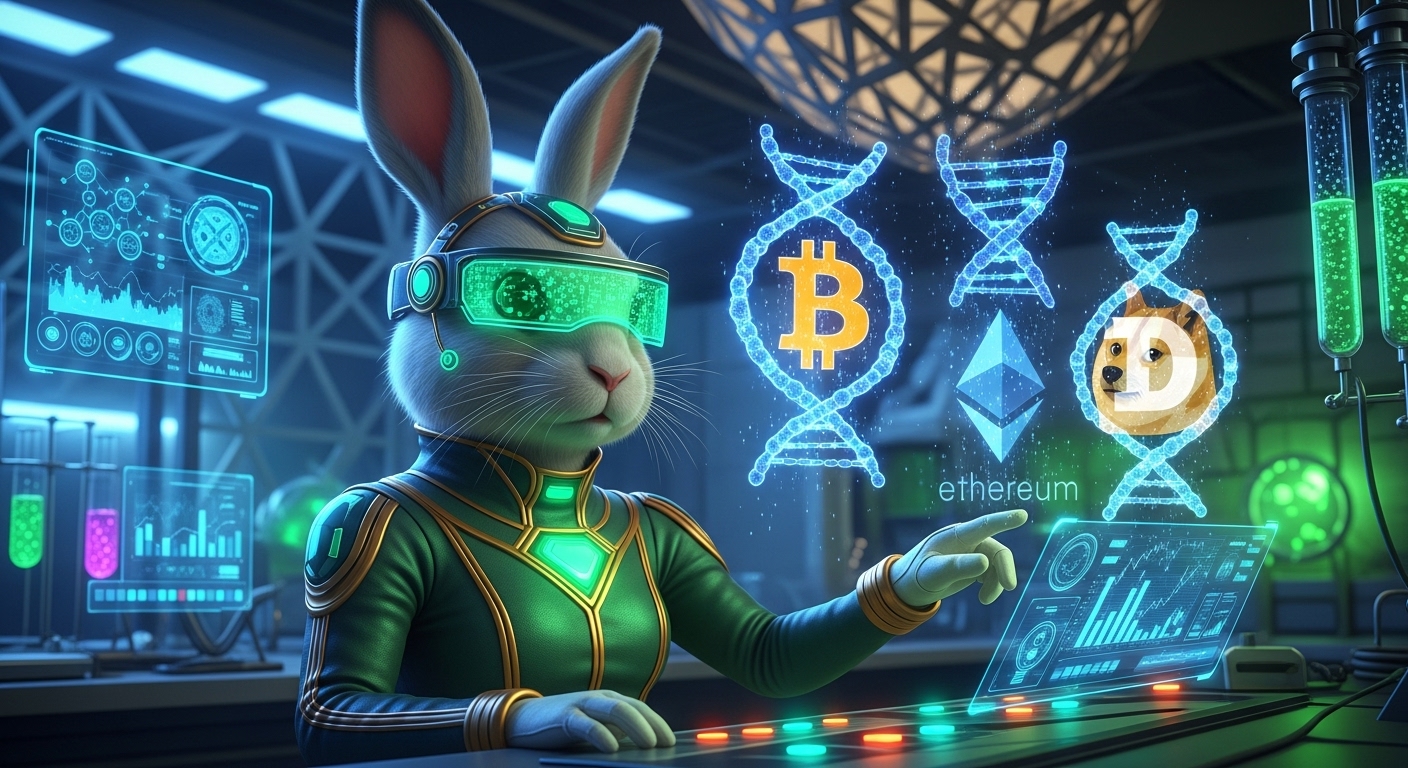Web3 gaming is shifting away from the old play-to-earn model that focused mainly on earning tokens.
Today, the spotlight is on play-to-own, where players gain real ownership of NFTs and in-game assets.
This change makes gaming more rewarding and gives players control over what they collect and trade.
More people are getting into Web3 games as the technology becomes easier to access. Artificial intelligence helps recommend quality titles, so players spend their time on games that offer real value.
This post covers the best Web3 games and trends to watch, highlighting how they benefit players by combining fun with true ownership.
Understanding the Play-to-Own Revolution in Web3 Gaming

The shift from traditional gaming to Web3 has introduced a fresh outlook on player involvement.
Instead of just playing, you now own pieces of the game universe. This change transforms your time and effort into something permanent and valuable beyond the screen.
Play-to-own models put true control in your hands. You can collect, buy, sell, and trade unique in-game items secured by blockchain technology.
These aren’t just pixels or game files; they represent digital assets that belong to you independently of the game developer.
For more guides on Web3 related matters, check out, Web3 Advertising : Complete Guide for Beginners.
What Play-to-Own Means for Players
Play-to-own shifts the focus from earning tokens to owning assets that hold real value. You earn items like NFTs, skins, weapons, or land that aren’t locked into the game platform.
Because these assets live on the blockchain, you can move them across games or sell them for profit.
This ownership opens up possibilities such as:
• True asset control: You decide what happens with your items.
• Long-term value: Assets can increase in worth as the game grows or become rare collectibles.
• Interoperability: Some projects allow transferring assets between different games or virtual worlds.
For players, this means you’re investing in your gaming experience, building a collection that can offer returns or simply reflect your status and achievements.
How Web3 Technology Enables Play-to-Own
Blockchain lies at the heart of this revolution. It keeps track of every digital asset and its owner in a way no one can tamper with.
This decentralized ledger confirms your ownership, so the item is yours, not the game company’s.
Smart contracts automate transactions and item creation. Unlike traditional games where items are controlled behind closed servers, blockchain games put item data out in an open ledger everyone can verify.
This transparency builds trust between players and developers. Explore Web3 Technology.
Items stored as NFTs (non-fungible tokens) represent uniqueness and scarcity. Since each NFT has a unique code, no two items are alike, adding real-world value to your in-game gear.
Benefits Beyond Ownership
Play-to-own changes how we see gaming from a hobby to a form of investment. Here’s why it grabs attention:
• Earnings through creativity: You can create, sell, or rent assets within games.
• Community-built economies: Player-driven markets thrive, letting you benefit from supply and demand.
• More meaningful progression: You’re rewarded with tangible assets, not just leaderboard ranks or points.
Games embracing this model often have thriving player communities and active marketplaces where gamers support each other and share rewards.
The play-to-own model is more than a trend; it’s reshaping what gaming means to players around the world.
Owning your digital treasures offers a fresh thrill that goes beyond gameplay, it changes how you think about and interact with virtual worlds.
Top AI-Recommended Web3 Games to Play

Web3 gaming is bringing some incredible titles that mix engaging gameplay with real ownership through blockchain technology.
These games go beyond gimmicks, offering smooth play experiences while introducing NFTs, tokens, and player-driven economies that really matter.
Here’s a look at some of the top AI-recommended Web3 games you should consider trying this year.
FIFA Rivals (Polkadot/Mythical Games)
FIFA Rivals offers an NFT-based sports experience that feels familiar and easy to jump into. Instead of complicated blockchain concepts, it delivers intuitive gameplay centered around collectible digital athlete cards.
This makes it accessible for new users who want to enjoy competitive soccer without getting bogged down by crypto jargon.
Powered by Polkadot and Mythical Games, FIFA Rivals hides blockchain behind the scenes, so you don’t have to worry about wallets or transactions.
You simply build your teams using unique player cards, upgrade them, compete in real-time matches, and earn digital assets you truly own.
With partnerships like FIFA’s licensing and Adidas gear integration, it’s a solid entry point into Web3 through a classic international sport.
Compare articles to gain more knowledge of Web3 via, 7 Best Web3 Wallets : A Multi-Chain Support Explained.
Off The Grid (Avalanche)
Off The Grid is a third-person battle royale set in a cyberpunk world, backed by Avalanche’s scalable blockchain.
The game aims to attract high daily active users with its thrilling combat and expansive world. Players engage in fast-paced battles, using highly detailed customizable weapons and cybernetic upgrades like “cyberlimbs.”
What makes it stand out in Web3 gaming is its optional NFT integration through the GUNZ platform, allowing players to turn loot and items into tradable NFTs.
The native $GUN token rewards gamers for their achievements in a competitive environment that feels more like traditional AAA shooters than typical blockchain games.
This combination of slick visuals, advanced gameplay, and blockchain ownership gives Off The Grid a distinctive spot in Web3.
Illuvium (Ethereum Layer 2 – Immutable X)
Illuvium is one of the few AAA-quality Web3 games pushing the open-world RPG genre using Immutable X as a layer-2 solution for Ethereum.
Players explore an alien landscape capturing creatures called Illuvials, each represented as NFTs. These team-building creatures take center stage as you battle in strategic autobattler arenas.
What elevates Illuvium is its governance token, ILV, which lets holders vote on game updates and earn revenue shares.
The visuals rival traditional games with cutting-edge graphics, setting the standard for how blockchain games can match the quality of non-blockchain titles, while delivering true player ownership and decentralized decision-making.
Big Time (Multiplayer Action RPG)
Big Time blends time travel adventures with action RPG elements, focusing on dynamic NFTs to enrich the gameplay.
Instead of pushing pay-to-win mechanics, Big Time prioritizes fun and depth, encouraging players to engage in cooperative battles across different eras.
Its design centers around allowing players to own, craft, and upgrade unique NFT items used during combat.
The game avoids monetization-heavy distractions and creates a player-first experience where owning digital assets enhances the adventure instead of blocking progress.
Other Noteworthy Web3 Games
Beyond these titles, many other games bring unique features and communities worth exploring:
• Axie Infinity: The pioneering NFT pet-battler with constant updates focused on balancing its player-driven economy and expanding gameplay modes.
• Chainmonsters: A Pokémon-like MMO that emphasizes exploration and collection, with blockchain-based item ownership.
• Forest Knight: A tactical RPG integrating NFTs into character progression and gear.
• PEPENODE: A playful strategy game using meme culture and NFT cards to engage community-driven battles.
• Gunz (formerly Off The Grid): Offers a gateway into blockchain item trading within a fast-paced shooter environment.
• Gods Unchained: A digital card game combining competitive strategy with NFT cards and a major focus on updated tokenomics and mobile accessibility.
• Pixels: An open-ended world focused on farming and exploration, allowing players to build and interact with NFT assets across multiple games.
These Web3 games are shaping how blockchain gaming intersects with traditional game design by focusing on player ownership, social dynamics, and engaging token economies that add real value.
Whether you want sports, RPG adventures, battle royales, or competitive strategy, offers a growing list of games where blockchain enhances your experience without getting in the way of pure fun.
Key Trends Shaping Web3 Gaming

Web3 gaming is changing fast , moving beyond simple concepts like earning tokens to more engaging, player-centered experiences.
Understanding these major trends helps you spot where the best games are headed and what makes them stand out.
From ownership models to technology upgrades, these shifts are redefining how you play, collect, and invest in virtual worlds.
Play-to-Own Becomes the New Standard
The old play-to-earn approach, which mainly hooked players with token rewards, is losing favor.
Today, play-to-own dominates because it gives you real control over your in-game assets. When you earn or buy an NFT, you hold a verifiable item that you can trade, sell, or use in different games or communities.
This means every moment you spend playing builds your unique digital portfolio. It’s like collecting rare baseball cards, but these “cards” can also power your gameplay or hold value across different platforms.
Cross-Game Interoperability Grows
One of the most exciting trends is the rise of cross-game and cross-platform asset use. Instead of being stuck with items limited to one game, developers are starting to build ecosystems where your NFTs or digital items function in multiple games or metaverses.
Think of it as taking your favorite character, weapon, or skin across different games without losing value or uniqueness.
This boosts the utility of digital assets and makes investing in them feel more sustainable and worth your time.
Layer-2 Solutions Reduce Costs and Speed Up Play
High transaction fees and slow blockchain confirmations used to frustrate players. Many Web3 titles shift to layer-2 scaling solutions and alternative blockchains that offer fast transactions at minimal cost.
This improves your gaming experience by cutting down delays, making trading smoother, and enabling real-time multiplayer action that feels natural. Layer-2 solutions keep blockchain benefits without the annoying barriers that once limited player adoption.
Stronger Focus on Community and Governance
Modern Web3 games depend deeply on their player bases. More games now empower communities with governance tokens that allow voting on game changes, asset policies, or new features.
This transparency and shared power increase trust and engagement. Instead of feeling like passive consumers, players become active stakeholders with a say in how the game develops.
AI Integration Enhances Game Design and Player Matchmaking
Artificial intelligence is used increasingly to improve the quality of Web3 games.
AI helps design smarter NPCs, tailor challenges to player skill levels, and recommend games based on your preferences and play history.
These improvements make games more fun while ensuring you don’t waste time on low-quality titles. AI can also support fraud detection and secure transactions, giving you peace of mind.
Environmental Concerns Drive Sustainable Blockchain Choices
Players and developers are more aware of the environmental impact of blockchain networks. That’s pushing many projects to use energy-efficient consensus methods like proof-of-stake over proof-of-work, or to adopt eco-friendly sidechains.
This shift makes Web3 games more appealing to a broader audience who want to enjoy blockchain benefits without guilt. It’s a positive step for long-term growth in the sector.
Increasing Use of Dynamic and Upgradable NFTs
Static NFTs that just sit in wallets are giving way to dynamic NFTs that evolve with your gameplay or achievements.
You might see characters, items, or skins that level up, change appearance, or gain new powers based on how you play.
This adds depth to ownership and makes your assets more meaningful. It’s similar to leveling up a rare collectible card or trophy as you invest time in the game.
By keeping an eye on these trends, you can better navigate the fast-changing Web3 gaming space. Whether you’re a casual player or a serious investor, understanding these shifts helps you make smarter choices about where to spend your time and money.
Choosing the Right Web3 Game for You
With so many Web3 games emerging, picking the right one can feel overwhelming. It’s not just about fancy graphics or the latest trend; it’s about finding a game that fits your interests, playing style, and what you want from your time investment.
Whether you’re here to enjoy a deep storyline, build a tradeable collection, or compete in fast action, the right game will keep you engaged and rewarded.
To help you narrow down your choices, here are some key factors worth considering before diving in.
Understand Your Gaming Style and Goals
Every player has a different reason for trying Web3 games. Some want to collect rare NFTs and build their portfolio; others want an immersive adventure or strategic competition.
• Casual Players: Look for games with simple mechanics and quick sessions. Sports-based games or battle royales with straightforward goals tend to work well.
• Collectors and Traders: Games focused on rare and upgradable NFTs with active marketplaces are ideal.
• Hardcore Gamers: Choose games with rich narratives, complex mechanics, and competitive elements.
Knowing your goal helps you avoid games that might demand too much time or have features you don’t enjoy.
A fast shooter with tradable gear might appeal less if you want a tactical RPG with crafting and quests.
Examine the Play-to-Own Model Closely
Focus on games that emphasize true ownership of assets, not just temporary gains. Check if items like skins, characters, or weapons are NFTs that you can trade or sell outside the game.
The value of these assets should be backed by a solid economy and not just speculative hype.
Look for:
• Verified ownership: Assets linked via blockchain.
• Marketplace support: Easy trading and fair fees.
• Interoperability: Ability to use assets across games.
Avoid games promising huge token payouts with unclear or unsustainable economics. A stable token system with fixed supply and burn mechanisms means your assets won’t suddenly lose value.
Check Blockchain and Technology Choices
The blockchain a game uses affects your experience a lot. Some blockchains have high fees and slow transactions, which can disrupt gameplay.
Others use layer-2 solutions or alternative chains to reduce costs and speed up item transfers.
Consider:
• Games on well-established chains like Ethereum layer-2s, Polygon, or Avalanche.
• Titles with support for cross-chain asset movement for greater flexibility.
• Games that use energy-efficient networks if you care about sustainability.
A smooth blockchain backend means you won’t be stuck waiting or paying unnecessary fees when trading items or joining matches.
Evaluate Community and Governance Features
A strong player community often signals a healthy Web3 game. Check if the game offers governance tokens or voting rights.
These let players shape game decisions or influence economies, creating a sense of real ownership beyond just NFTs.
Also, active discord servers, regular developer updates, and community events show the team cares about player feedback and long-term success.
Look for Quality Gameplay and User Experience
True Web3 games go beyond just blockchain features. The gameplay itself has to be fun, balanced, and polished.
Test early demos, watch gameplay streams, or read reviews to see if the game can hold your attention.
Simple crypto integrations like hiding wallet setup behind the scenes or automatic gas fee handling also smoothen the experience, especially when you’re new to blockchain gaming.
Trial and Learn
Sometimes the best way to pick your game is to try a few. Many Web3 games offer free versions or low-cost entry points so you can experience gameplay and economics firsthand.
Track how your assets grow or change, and whether the community feels supportive. Avoid locking too much money in before you’re confident the game fits your style and goals.
By being clear about what you want and doing a little research, choosing the right Web3 game becomes much easier.
Focus on games that give you control over your assets, provide enjoyable gameplay, and respect your time. The right choice will turn your gaming hours into something valuable and rewarding.
Conclusion
The shift to play-to-own marks a clear turning point for Web3 gaming in 2025. Players now gain true ownership of their in-game assets, backed by blockchain technology, making gaming more meaningful and rewarding.
AI plays a big role by helping gamers find high-quality titles that balance fun and real value. This guidance removes guesswork and raises the bar for user experience across Web3 games.
With mainstream adoption growing and the player base expanding rapidly, exploring these innovative games opens up fresh possibilities.
For more tips on navigating Web3 and blockchain gaming, check out the NFT marketplace development guide and the Sui blockchain overview. Your next favorite Web3 game could be just a click away.

Adeyemi Adetilewa is a digital marketing strategist and writer with over a decade of experience helping B2B, SaaS, Web3, and eCommerce brands grow through data-driven marketing. Adeyemi empowers professionals and business owners with actionable insights, growth strategies, and digital tools for success.

